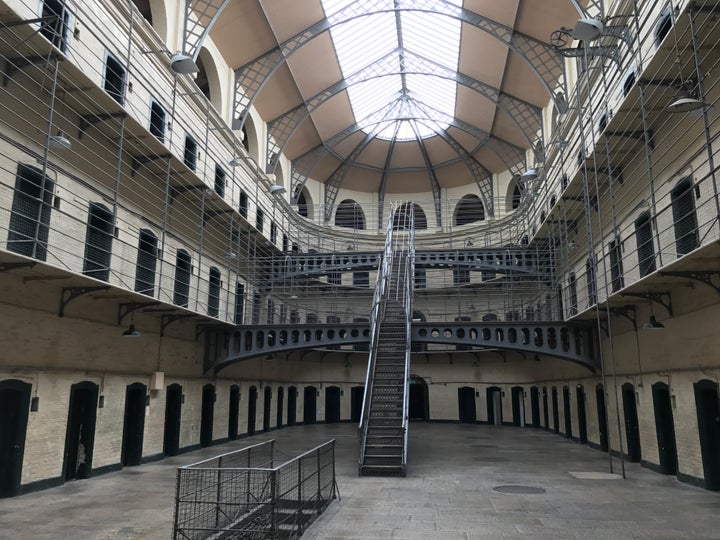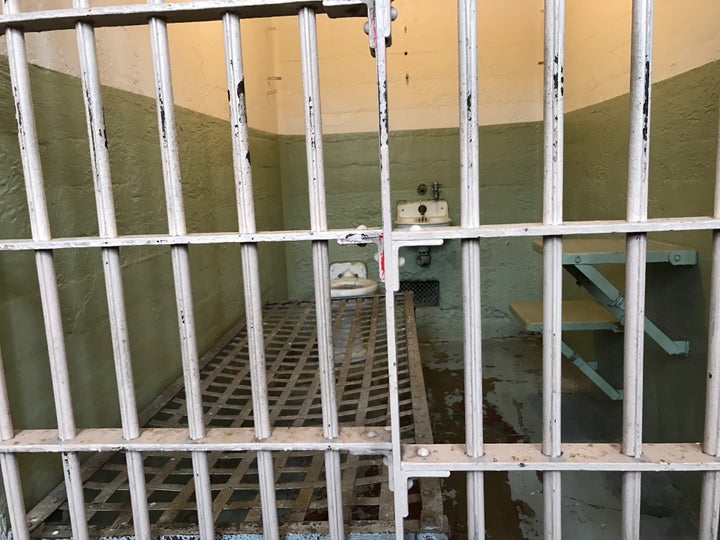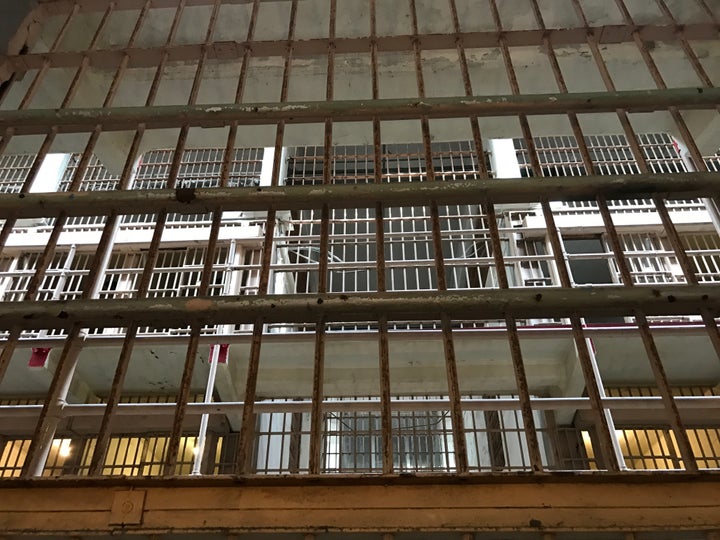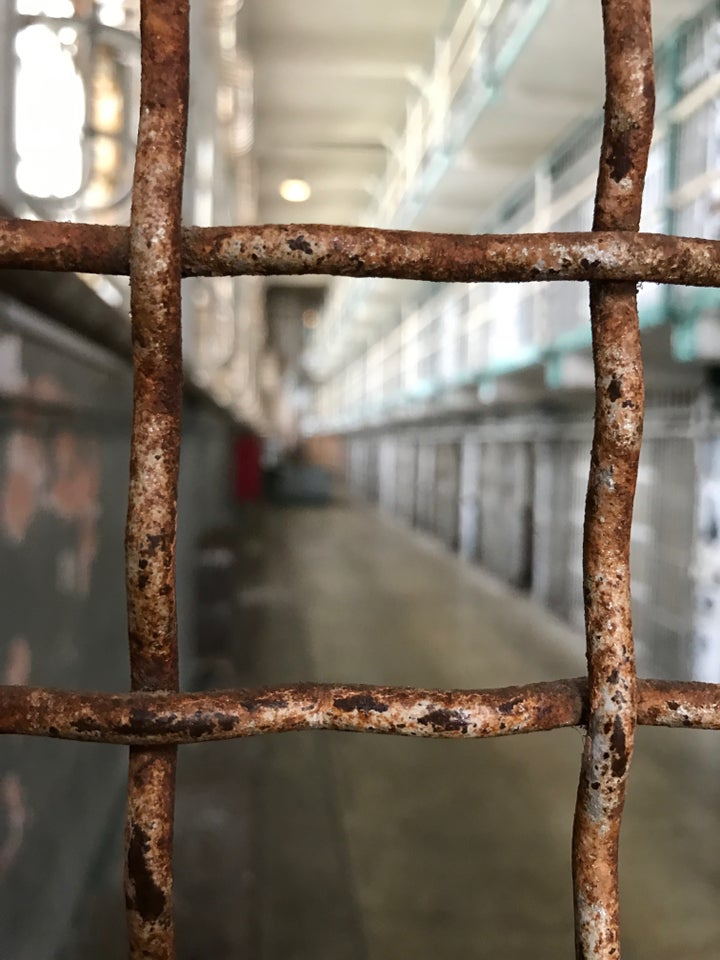Counting the days takes on a whole new meaning when you’re 22 years into a 25-year federal drug sentence. I was biding my time in a federal prison in Arkansas in 2013 when I was abruptly yanked from the compound and thrown into the Special Housing Unit. The reason? Writing articles critical of the federal Bureau of Prison’s Residential Drug Abuse Program, prison authorities intimated. Having been a prison writer for 21 years, I was accustomed to a bit of harassment. But this time was different. More extreme.

After sitting in “the hole” under investigation for 30 days, I was informed by prison officials that if I kept writing I’d get transferred to a Communications Management Unit (CMU), where I’d sit in a roughly 6- by 9-foot cell, with all my external communications restricted and monitored, making it almost impossible to practice journalism. If I stopped writing altogether, I’d get nine months chopped off my sentence. Needless to say, I quickly put away my pen.
A post 9/11 creation, “Little Gitmos” ― a term the press coined for CMUs ― were opened in 2006, drawing a torrent of criticism. Called the “black ops unit” or “where they keep the terrorists” by prisoners, the BOP’s program statement says “the purpose of the CMUs is to provide an environment that enables staff to more effectively monitor communication between inmates in CMUs and persons in the community.” This, they claim, is necessary to ensure safety and to protect the public.
CMUs are hardly a new idea. ADX Florence, the BOP’s Supermax has been around since 1994 when control and isolation units started popping up all over the country to house high profile prisoners like the “Unabomber” Ted Kaczynski and Chicago’s Gangster Disciples boss, Larry Hoover. In 2013 Mother Jones named ADX one of America’s worst prisons and reported that the facility was “pretty close to hell.”
Rationale for CMUs was the heightened security surrounding the war on terror, says Paul Wright, founder and executive director of the Human Rights Defense Center. “But in the process the government has put dissidents, jailhouse lawyers, and prisoners that have been critical of the status quo there too.” The Center for Constitutional Rights (CCR) found that 60 percent of the prisoners housed in the units are incarcerated on terrorism-related charges; the other 40 percent are just there to be silenced.

“Historically they’ve done this [kind of censorship] through ADX Supermax or control units,” Wright tells OZY. And Rachel Meeropol, Senior Staff Attorney at CCR adds, “We have received complaints about writers and jailhouse lawyers going to CMU since early in their existence. It may very well be that the use has increased.” But shrouded in secrecy, concrete evidence is hard to come by, still Meeropol contends that CMUs are being used to intimidate or silence prison writers.
One of the fundamental reasons CMUs are unconstitutional, according to the CCR’s 2014 lawsuit, Aref v. Holder, is that prisoners don’t know why they’re transferred to these units or how they can get transferred back out. With no access to records on who’s housed in them, or the reasoning behind these detainments, anyone who’s confined is at the BOP’s mercy. Restricted to one six-page letter per week, three 15-minute phone calls and four 1-hour visits a month, prisoners housed at a CMU are being held in limbo and nearly incommunicado, with little or no contact from the outside world. A death blow to a prison writer.
“They’re really there as a punishment to keep them quiet and that’s extremely concerning,” says Amy Fettig, deputy director of the ACLU’s National Prison Project. Usually reserved for domestic terrorism offenders who might be using outside channels to communicate, the BOP’s initial justification for the units, she says, has been perverted to censor anyone who disagrees with prison authorities.
And those wielding the power of the pen have long known they’re taking a risk. “As a writer in prison, you always know that you can get in trouble for writing,” says John Broman, 37, who’s serving an 18-year sentence for a bank robbery he committed to feed his heroin addiction. “Going to the hole for God knows how long ―- it’s just something that we kind of accept. A job hazard.”
Broman interviewed one of the World Trade Center bombers at USP Hazelton in West Virginia for VICE and got thrown in the hole for his efforts. He says his unit manager told him: “You’re f**ked. You’re going to the CMU.” Efforts to reach the high security prison for comment went unheeded, as did missives to the BOP’s Public Affairs Office requesting how many prisoners are housed in CMUs.

Rob Rosso, a prison writer from Arkansas, is doing life for a meth-related charge. He says he was transferred to FCI Terre Haute’s medium security facility so that corrections officers could easily walk him from general holding to the CMU anytime he wrote an offending article. One such piece? “The Illegal Tobacco Trade in Federal Prison,” which prompted his transfer from to Indiana from FCI Butner in North Carolina.
Daniel McGowan, a writer who did seven years for arson, first heard about the CMU when he was in transit. Housed at a low-security prison in Minnesota, FCI Sandstone, McGowan knew a CMU was certainly a possibility, but he’d thought he dodged it. But after writing some articles “about prison, the drug war, and how messed up the BOP is,” the alleged Earth Liberation Front member, was snatched up and transferred to the CMU at USP Marion in Illinois.
“The BOP was not happy about what I was writing.” McGowan tells me. “The CMU is used to house people the BOP is bothered by politically. They are very sensitive to criticisms of their prisons and will do anything they can to silence people.” McGowan says the fact that he wasn’t a gang member or violent made it improbable to send him to ADX. “Putting me in a CMU was much easier,” he says. “They thought it would slow me down, but I kept writing.”
The CMU is a pretty bizarre concept because the BOP is controlling people for what they might say, think, or do in terms of communicating with the outside world. That seems to be pretty antithetical to the whole notion of free speech, but they’re getting away with it. Historically the notion of prison’s been to deprive people of their liberty by keeping them locked up psychically, rather then this whole thing that you can control people’s thoughts. It’s pretty novel and draconian, both in concept and in implementation.
“All prisoners are intentionally removed from public attention, to varying degrees,” Will Potter, an investigative journalist who gave a TED Talks presentation on “The Secret US Prisons You’ve Never Heard Of Before,” tells me. “CMUs are a more extreme representation of prison policy. The government uses solitary confinement, special administrative measures, and other means to isolate prisoners from their communities and the public.”

But I keep running into cases like Paul Bergrins. A former federal prosecutor and prominent defense attorney who ran afoul of the wrong group of prosecutors. Ones that were out to get him, no matter the cost or the laws they broke doing it. Not to say that Bergrin is innocent, I am not judge and jury, but I know what it’s like being inserted into the criminal justice machinery thats been allowed to flourish unchecked in this country for going on thirty years.
Bergrin, sentenced to six life terms for murder and racketeering, was at the CMU unit at Terre Haute. He dared to do an interview with Don Diva magazine about what it was like living in a CMU. His raw portrayals of the reality he faced everyday were too much for the Bureau of Prisons. So they transferred him to ADX Florence. They didn’t want to give him the low-budget treatment. It was time to step up to the big leagues. In prison at least.
The horrors of CMU’s have been around for 10 years, but this new trend of using the units to silence prison writers is a blatant First Amendment violation. “Gagging people before they’re able to say or write anything,” is how Wright characterizes it. They’re simply trying to “control people at every level of their communication before they’re able to say it.”
There are several different, sometimes overlapping reasons why this is happening, formerly imprisoned writer Barrett Brown says. “In some cases officials are legitimately concerned that the information getting out might lead to an investigation of their institution, which it occasionally does. In other cases, some official decides that his or her superiors would want the prisoner silenced, and acts in accordance with that belief, even when the prison wouldn’t be threatened. There are also officials who simply enjoy the exercise of power.”
With so little external oversight First Amendment violations go unreported “setting up a dynamic where abuse is much easier to perpetrate and much harder to uncover,” Fettig says. “What we need is more public scrutiny, more press attention.” Because when a government entity operates outside of the public sphere with no accountability, corruption can ensue. “Everyone that had any connection with you going there,” Broman says. “Be it family, editors, girlfriends, etc. are gone. They’ll won’t tell you this. But no letters will go to them. Whatever you write isn’t going to get there. The few people that you can write, if you write anything that they don’t like, will face immediate dismissal from your life forever, or until the BOP decides to let you out of prison.”
